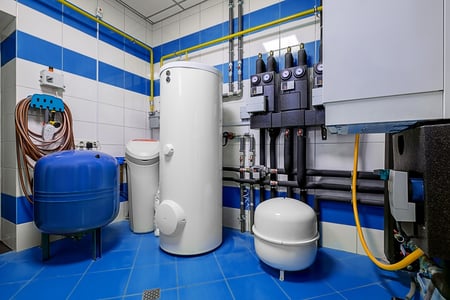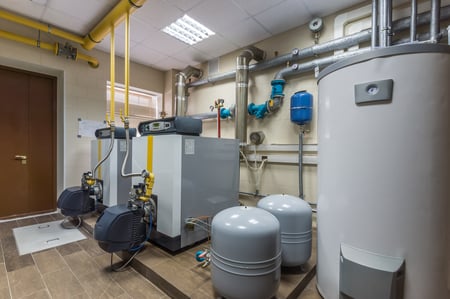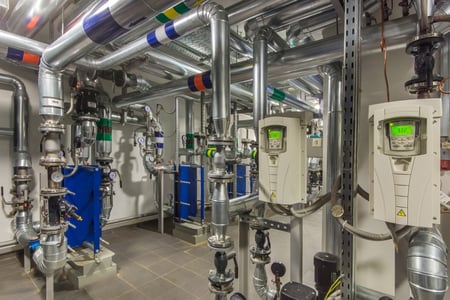NYE Boiler Design Services
A boiler system can be installed smoothly or poorly depending on the quality of the design. With NYE, expect only the most precise boiler design.
Efficiency can go a long way in ensuring a smooth operation and a cost-effective one. We offer this and more here at New York Engineers.
A boiler system needs to be properly designed to ensure that it lasts for years and years to come. NYE guarantees durable units with our design.

Do you need a proper boiler design service for your building? We at New York Engineers can help you. We know how important boilers are, especially during the winter seasons. They provide the heat output needed to keep the interiors of your building comfortable throughout the cold, winter days.
With our boiler design services, which are carried out by professional designers and engineers, you can expect professional designs that will help you cut down on the total costs of your boilers and even reduce their overall impact on the environment.
We can meet your demands based on your specifications. And with the help of our professional staff and the most advanced tools, we’ll be able to provide you with the output you’re looking for. We use AutoCad MEP Design and Drafting, Revit BIM Modeling, and more to design and draft solutions in the most accurate way possible. We are equipped with the right team of draftsmen, engineers, and qualified analysts. Our modernized design process and innovative technical expertise are sure to add value to our clients’ business. We listen to your needs and can convert hand-drawn sketches and drawings to highly detailed 2D or 3D models. We can also make everything from scratch and do all the design work on your behalf.
Boilers are classified using a number of factors; therefore, our range of boiler design services will vary depending on the type of boiler you want for your project. They can be classified using the following:
Depending on the total number of tubes, a boiler can be classified as either single tube or multitubular.
A single tube contains a single fire or water tube, thus the name. Boilers that fall under this classification include the Cornish boiler and the simple vertical boiler. On the other hand, a multitubular boiler has either two or more tubes. Such examples are the Locomotive, Lancashire, Cochran, Wilcox, and Babcock boilers.
Under this classification, a boiler can either be horizontal or vertical. A horizontal boiler is when the shell’s axis in the boiler is in a horizontal position. The same applies for a vertical boiler except that it’s in a vertical position.
Examples of horizontal boilers are Babcock and Lancashire while the Cochran boiler falls under the vertical boiler classification.
A boiler can have either fire or water as its contents.
In a fire-tube boiler, hot gases pass through inside the tubes, with water surrounding the tubes outside. Compared to a water-tube boiler design, a fire-tube boiler has a simple construction and requires a less rigid water treatment. However, it requires a longer time to raise the steam pressure due to the large volume of water it needs. It also generates a lot of steam.
Some examples of fire-tube boilers include the Lancashire, Locomotive, Cochran, and Velcon boilers.
A water-tube design, on the other hand, has water flowing through the tubes with combustion gases passing outside. The main advantage of a water-tube boiler is that it requires less time to raise steam pressure. Basically, it’s the exact opposite of the fire-tube design.
A few examples are the Loeffler, Benson, Yarrow, La-Mont, and Wilcox boilers.
Boilers can be classified as either externally fired or internally fired based on their furnace’s position. Externally fired boilers have the furnace outside of the boiler shell. Those that are classified as water-tube boilers will always have their furnace placed outside.
Meanwhile, internally fired boilers have the furnace inside the boiler shell. Most boilers with a fire-tube design are classified as internally fired, with a few exceptions.
In terms of usage, a boiler can either be mobile or stationary. Stationary boilers are often used in power plants and industrial settings. Once installed, they can no longer be moved to another location. Meanwhile, mobile boilers can be easily transported due to their structure and design. Marine and locomotive boilers are just some examples.
Lastly, boilers can be classified based on how steam and water circulates. They’re classified into two: natural and forced circulation.
A natural circulation boiler relies on the convection currents which appear once water is heated. Some examples include Cochran and Lancashire boilers. On the other hand, a forced circulation boiler relies on a centrifugal pump which is driven using external power. Benson and La-Mont boilers fall under this classification.

Boilers are divided into three different types based on their application: commercial, condensing, and electric.
A commercial boiler includes a small water tube, fire tube, and electric resistance. It’s mostly used in various facilities such as schools, universities, office buildings, and hospitals. Of the various boiler types, commercial boilers can be considered the most diverse.
They can be fueled by either natural gas, propane, or even light oil. Depending on the quality of the boiler and its application, a commercial boiler can reach a thermal efficiency of up to 99%.
On the other hand, a condensing boiler uses either gas or oil and has the ability to reach up to 98% thermal efficiency which is possible by condensing water vapor in the exhaust gases. Due to its condensing design, it’s capable of recovering a portion of heat from the vapors which could otherwise get wasted.
Lastly, electric boilers produce the least amount of noise, not to mention they’re quite compact and easy to install. Moreover, they don’t have any extra combustion components which result in their overall minimal complexity. They’re the most preferred option for those in areas with affordable electricity costs such as Chicago and Oklahoma.
To make sure we can come up with a detailed and comprehensive design for your boiler installation project, we’ll have to work with you hand in hand so we can fully understand your specifications.
Ideally, your preliminary specifications should contain the following:
A basic boiler design will often start using just these parameters. However, it will be subject to change as minor and major details regarding the operation and site-specific requirements are added along the way.
To further achieve an optimum design for your boiler, we recommend that you check the following steps in our boiler design process, so you can have an idea of how our design process goes.
Since we will be working with you throughout the process, we’ll make sure to address any of your concerns and update the design based on any minor adjustments you had in mind. This way, we can assure that the final design we’ll be giving you is a complete work with all issues already solved in advance.
To put it simply, in order for us to create a detailed boiler design, we need to know the following:

Back in the days, poor boiler design has led to a number of accidents, particularly explosions, which result in a loss of property, even lives. Modern boiler designs aim to prevent such thing from happening.
Also, 3D modeling can help you determine how much space your boiler will take and what materials you are going to use for its manufacturing. Once your boiler’s specifications are determined, our professionals at NY Engineers will then come up with a detailed plan and provide you with an estimate as well as a target date for completion.
We at NY Engineers are more than just creating 3D models for your boiler needs. We can also provide you with recommendations to make sure your boiler installation and manufacturing project becomes a success. Our team of skilled and experienced designers can provide you with detailed and high-quality designs.
We’ll make sure to achieve your design based on your specifications at a very cost-effective approach. That said, here are the reasons why you should choose us for your boiler design needs:
Here at NY Engineers, we are focused on giving our clients only the best of our services. We intend to create long-term relationships, and we consider our design services as a way to do so. Regardless of where you’re from within the US, whether in Los Angeles, Oklahoma, Chicago, or Florida, we will be ready to be of service.
If you need help designing your boiler for your building or property, then don’t hesitate to call us. Feel free to reach us through our hotline at (+1) 212-575-5300 or send us an email using the contact form. You can also choose to request a proposal, and we’d be glad to give you a custom proposal within 24 hours!